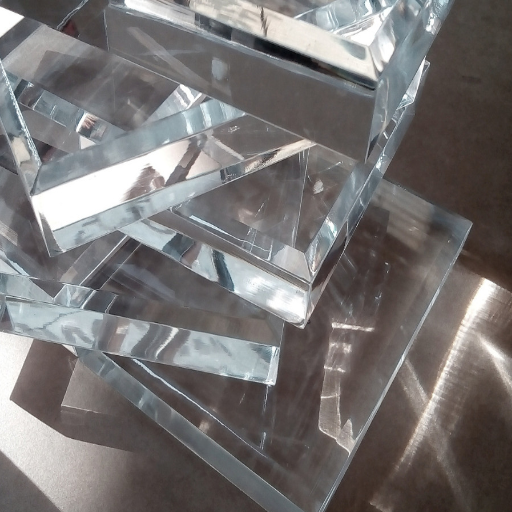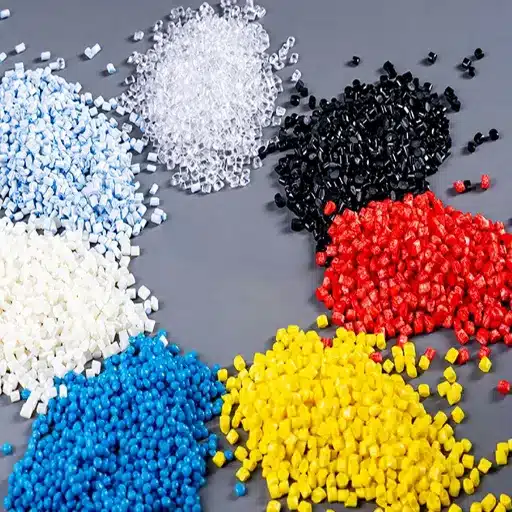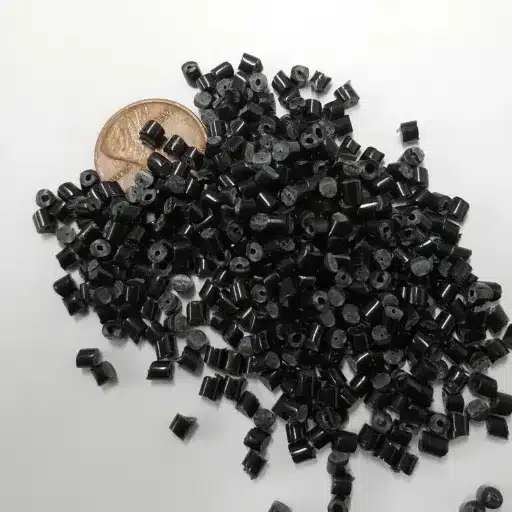Acrylic, perhaps the most versatile and widely used material in the present industrial landscape, is highly valued for its durability, clarity, and adaptability in working with it. From the vast array of protective barriers and interior decoration elements to well-thought-out processes in technology and working arts, acrylic is widely used in both mundane and specialized crafts. But have you ever considered how acrylic is made and from what materials, or why many sectors widely use it? This guide explores the wonder that is acrylic by delving into its composition, the manufacturing process, and the wide range of applications and operational uses. Whether you’re a DIY enthusiast, a working professional in an industrial setting, or simply interested in materials science, this article will provide you with a comprehensive understanding of acrylic’s unique properties and its profound relevance.
Understanding Acrylic and Its Composition
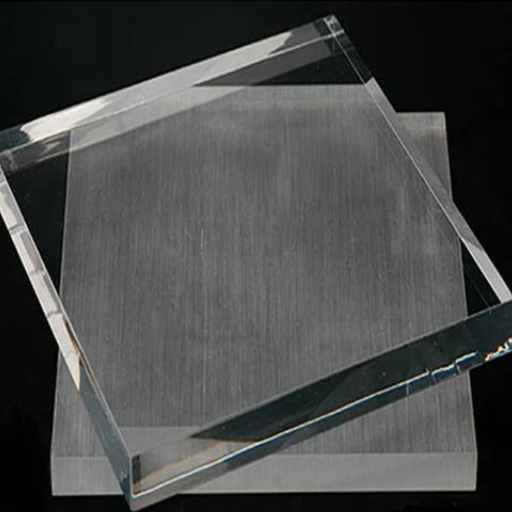
What Is Acrylic Made From?
Acrylic, scientifically termed polymethyl methacrylate (PMMA), is a synthetic and versatile polymer derived from derivative chemicals of natural gas. Its major component methyl methacrylate (MMA) undergoes a polymerization reaction to give this transparent and hard material. The polymerization reaction involves the linking together of MMA molecules into long chains, resulting in a lightweight material that is highly impact-resistant and renowned for its clarity and strength. What makes acrylic particularly appealing is that it mimics the transparency and brilliance of glass, offering a safer, shatterproof alternative for many applications.
Manufacturers often modify their acrylic fabrication processes to meet the diverse needs of consumers and industries. One classic example of fiber manipulation is the transformation of raw matter into different attributes through casting or extrusion. Generally, cast acrylic has high optical clarity and chemical resistance, making it perfect for aquariums or display projects. Extruded, meanwhile, will be cheaper and easier to work with, making it ideal for signboards or everyday household items. Additives can also be incorporated at the production level to enhance features such as UV resistance, scratch resistance, or for tinting purposes from an aesthetic perspective.
Environmentally resilient, this adaptable material is also recyclable, which adds to the sustainability aspect of its design and manufacture. The industries have been creative in reducing waste and extending the lifecycle through methods that include using scrap acrylic or repolymerizing it. Its sturdy chemical composition, together with multiple manufacturing approaches, ensures that acrylic is crucial across architecture, automotive designing, medical purposes, and consumer industries.
Chemical Structure of Acrylic Material
Acrylic material or PMMA is formed from polymer chains created by the polymerization of methyl methacrylate (MMA). The chemical formula of MMA is C5H8O2, structured as a methyl ester group attached to the alpha-carbon atom. These monomer molecules break their double bonds during polymerization, forging extremely robust single bonds to yield a rigid, transparent thermoplastic polymer.
The molecular structure of PMMA significantly contributes to its excellent optical properties, with light transmittance reaching as high as 92%, making it a suitable substitute for glass. Moreover, it exhibits chemical inertness to many reagents due to the stability of its carbon-carbon backbone. Density-wise, it averages around 1.18 g/cm³, yet remains light enough to suit a wide array of applications.
Currently, PMMA’s recent developments have favored copolymerization methods, resulting in excellent impact strength and thermal stability. Blending MMA with other monomers, such as butyl acrylate, forms modified acrylics suitable for applications requiring high stress, including automobile exteriors, housewares, and surgical devices. Hence, environmentally, the disposal and reprocessing of acrylic material will significantly contribute to its sustainability potential in modern production systems.
Types of Acrylic and Their Sources
Acrylics are versatile materials and are divided into two major classes, indicative of their synthesis and applications: cast acrylic and extruded acrylic.
Cast Acrylic: Cast acrylic is produced through a liquid monomer casting process, resulting in a product with superior optical clarity, durability, and thermal resistance. It is favored for works requiring precision machining, polishing, or fabricating, such as aquariums, display cases, and architectural glazing. Cast acrylic is typically sourced from manufacturers with a high-precision production process that meets high-performance standards.
Extruded Acrylic: Extruded acrylic is fabricated by forcing the acrylic polymer through a mold to produce sheets of uniform thickness at relatively low cost. This material is highly versatile and economical, and is therefore frequently used in signage, point-of-sale displays, and protective barriers. For sourcing extruded acrylic, suppliers capable of supplying large quantities in a cost-efficient manner are preferred.
Recycled and Modified Acrylic: With sustainability being a buzzword worldwide, recycled acrylic is taking center stage. Innovations aimed at reusing acrylic scrap and PMMA waste lead to materials with nearly equal strength and transparency. Modified acrylic, which features copolymers that enhance properties such as UV resistance, impact strength, and weatherability, is well-suited for outdoor use and applications, including skylights and automotive moldings.
Reliable acrylic sourcing involves standing behind suppliers that adhere to environmental standards. Furthermore, they must ensure that quality checks guarantee consistency in material performance.
Properties of Acrylic and Its Advantages
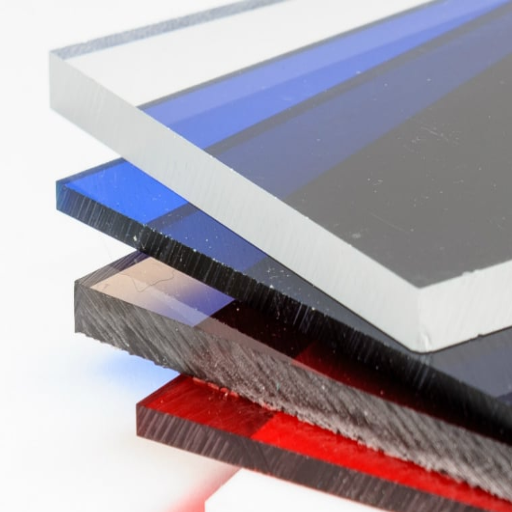
Key Properties of Acrylic Plastic
Often, people say that toxic acrylic plastic contains some kind of magic potion. Every disagreeing explanation becomes one of the properties that make acrylic plastics so versatile in almost all industries. To start with, anyone seeking maximum optical clarity may choose to own an acrylic surface panel that allows light transmission of nearly 92%, rivaling the best clear glass in the market. Another important property is that this material, being very light — half the weight of glass — is easier to hold and install, while also reducing freight and structural costs in large projects.
There is also a significant impact force, which can shred glass, whereas acrylic can withstand 17 times that. In this way, acrylics become a safer choice for use where punishing durability and shattering resistance are required, such as in safety barriers and protective shields. Another essential property of acrylic plastics is that they protect against the sun’s rays, performing very well upon exposure to sunlight without yellowing or degradation over a long period.
In addition to sound thermal insulation, acrylics have significantly lower thermal conductivity compared to conventional glass. Thus, it is an energy-efficient option for architectural windows and skylight applications. The material is chemically resistant to many acids, alkalis, and other environmental factors, thereby enhancing its reliability in extreme situations.
Besides that, fabricating seems to be quite an easy task. Acrylic is nearly unlimited in its shaping, cutting, or joining capabilities, thus ranging from sculptural art to precision-engineered components. This unique blend of properties will continue to increase its demand in diverse industries, including construction, automotive, and consumer goods manufacturing, while balancing performance with durability and aesthetic appeal.
Advantages of Using Acrylic Fabric
Known for withstanding the rigors of time and application in its abstract qualities, acrylic fabric is said to be weather-, UV-, and moisture-resistant, and hence apt for outdoor use in awnings and patio furniture. It is said to retain its colors very well, with exotic shades usually lacking visibly recognizable signs of fading even after prolonged sun exposure.
Its other main advantage is that it is so light that it can be handled and transported without losing its strength. Since the fabric is highly versatile, it is manufactured in textures and finishes to suit both functional and aesthetic specifications. For example, it finds application in situations that require a balance of comfort and strength, such as upholstery, apparel, and outdoor sportswear. All these properties make acrylic fabric a prima materia in performance- and life-centered industries today.
Comparison with Other Plastics
An acrylic fabric distinguishes itself from other plastic materials with a balance of durability, moldability, and aesthetic appeal. While polycarbonate is more well-known for its impact resistance and is often used in industrial applications, acrylic fabric offers a more balanced compromise between rigidity and flexibility, making it suitable for consumer-facing items like furniture and clothing. Unlike polyester, a material known for its high durability and low cost, acrylic fabric often exhibits better color retention and weather resistance, particularly in cases involving prolonged exposure to direct sunlight. Nylon, on the other hand, appears to offer warmth and softness, which is particularly beneficial when making warm and cozy clothes.
Environmental factors have given acrylic fabric an intermediate status. It is less biodegradable than its natural counterparts; however, textile recycling is evolving to include synthetic fibers, such as acrylics. With this view in mind, newer production methods are being developed to reduce energy demands and lower emission levels in the generation of acrylic fibers, a gradual step towards greater sustainability. These comparative features position acrylic fiber apart, providing a distinct choice for industries concerned with performance, aesthetics, and functionality.
Applications of Acrylic in Various Industries
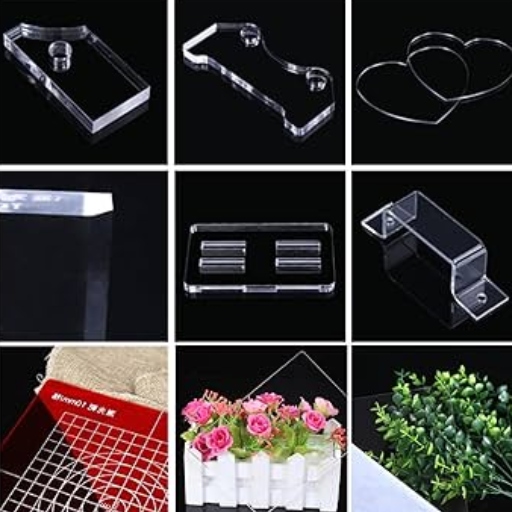
Common Uses of Acrylic Sheets
Due to their versatility and superior durability, acrylic sheets are widely used by most industries. The following are some of the most common applications of acrylic sheets:
Retail and Display: Acrylic sheets are used for signage, display cases, and point-of-sale displays. Greater transparency helps product visibility. Being lightweight and somewhat shatter-resistant, they are better options than glass when safety and ease of handling are of concern. Industry information suggests that clear acrylic is the ideal option for displaying high-value items because it offers the clarity of glass without its fragility.
Construction and Architecture: Acrylic sheets are one of the primary construction materials and are essential in modern construction and design. They are commonly used for windows, skylights, and partitions that require sound and light transmission, as well as resistance to UV rays. Weather-resistant properties make acrylic a suitable material for outdoor use, be it for protective barriers or canopies. Recently, impact-resistant acrylic types are now available for use in high-performance environments.
Automobiles and Transportation: The automotive industry utilizes acrylic sheet installations in various applications, including headlight lenses, dashboard units, and windscreens for motorcycles. They are lightweight and thus improve vehicle efficiency. They are clear, a property that makes Acrylic highly resistant to wear, further helping to achieve a long life for the object. Additionally, tinted and colored acrylic enhances the vehicle’s interior appearance and improves the sustainability of the work environment.
Medical and Health: Over time, acrylic sheets have gained entry into the healthcare sphere as protective barriers, medical equipment covers, and prosthetic components. Acrylic is appreciated for its hygienic properties, easy cleaning options, and ability to withstand constant sterilization, thereby playing a crucial role in sterile environments. Additionally, the latest developments in acrylic processing branches include the application of antimicrobial coatings, further ensuring and supporting its medical applications.
Interior design: Acrylic sheets are desirable for use in contemporary furniture, decorative wall panels, and lighting fixtures. Designers often take advantage of acrylic’s moldability and color options to create unique, custom pieces that add aesthetic value. For instance, acrylic furniture maintains the clean modern look while fully supporting practicality and durability.
Advertising and Branding: Acrylic sheets are widely used throughout the advertising industry for illuminated signage, logos, and branding materials. The sheets allow light to diffuse through them, ensuring even illumination by LED lights; this results in vibrant and attractive displays, making acrylic a popular choice for advertising both outdoors and indoors.
Such interrelated applications enhance the versatility and value of these acrylic sheets across multiple industries, and their value is expected to continue increasing due to ongoing research in material engineering and manufacturing processes. Thus, with its purely technical advantage, acrylic is aesthetically leading the design, and with its continued progress in sustainability, it commands a place in the design landscape.
Home and Design Acrylic
The flexibility, durability, and aesthetic appeal of acrylics have made them a favorite in home décor. Their transparent and lightweight nature would work well as an alternative to glass for furniture purposes, such as in coffee tables, shelves, or picture frames, all the while carrying a dual identity of style and functionality. Colored acrylic sheets are primarily used to add splashes of color to interior wall panels, room dividers, and other decorative features in much brighter contemporary tones.
Advances in production technology over the last few decades have significantly expanded the design potential for acrylics, which are now available in various finishes, including frosted, mirrored, and textured. These options serve as design elements to assist homeowners and designers in achieving a myriad of space treatments with the precision of an engineer or the creativity of an artist. Their resistance to wear and tear, coupled with their ease of maintenance, has allowed these pieces to retain both an aesthetic and functional personality. The trifecta of UV resistance allows for use in both outdoor and indoor décor, thereby enhancing their utility. This blend of style and functionality has been the big selling point for this material in the home arena.
Commercial Plexiglass Applications
Plexiglass finds use in a variety of commercial applications. It’s that strength, adaptability, and beauty that have kept it apart from countless others. Businesses use it as a protective shield, such as between-counter sneeze guards and partitions. These have started to gain importance in various shared places. Due to its lightweight nature and easy customization, it is highly preferred for signs and displays. It adds excellent visibility and elegance for branding purposes. One aspect that makes it attractive from the end-user’s perspective is its high transparency and excellent impact resistance. These qualities provide a safer and more cost-effective option compared to conventional glass, and it is used in various markets, including transportation and architecture. These are used for weather-resistant applications, such as outdoor window glazing and illuminated advertisements. These features make Plexiglass a widely accepted, top-choice material for shaping commercial spaces in this century, given its economical worth and flexible nature.
Manufacturing Process of Acrylic
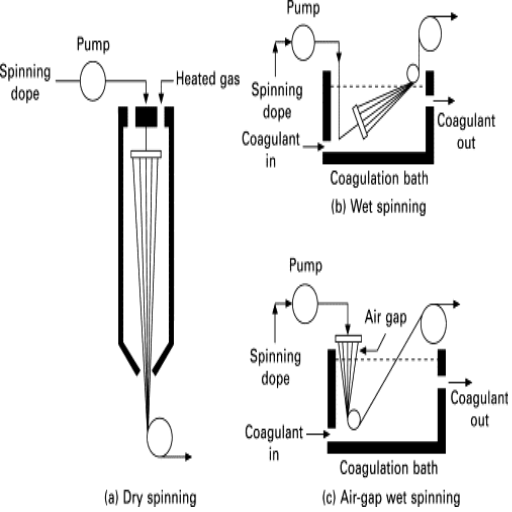
How Acrylic Is Extruded
Acrylic extrusion begins with small resin pellets, typically made of polymethyl methacrylate (PMMA), a sturdy and multifunctional thermoplastic. Initially, these pellets are put into the extruder, working with a heated barrel and a screw rotating mechanism. Inside the barrel, heat gets pumped in with big intensity as the resin reaches temperatures between 356°F and 428°F (180°C to 220°C). Slowly, this heat melts the resin into a viscous liquid.
Once completely molten, the acrylic is forced through a precision die that shapes the material into the desired form, whether as sheets, rods, or tubes, depending on the industrial needs. The die maintains the thickness and surface smoothness, which are essential for premium-quality acrylic products. After exiting the die, the extruded acrylic is subjected to a cooling system, which quickly solidifies the acrylic to preserve its shape. This is achieved through controlled air flows or water baths, which maintain temperature and maximize structural integrity.
The extruded acrylic is inspected for optical clarity, surface uniformity, and dimensional accuracy before being accepted into the industry. Thanks to continuous technological improvements in extrusion, acrylics can be produced in huge quantities with almost no material wastage, making them a low-cost, highly efficient, and sustainable option for the majority of applications.
Molding Acrylic Materials Varied Techniques
Molding an acrylic material involves various methods, depending on the application, design, or requirement at hand. Injection molding is a widely employed method in which acrylic is heated and injected into a mold at high pressure to produce highly repeatable and precise parts. It can be used to create very intricate designs, as it is a more efficient way of working than simpler designs with fewer intricate details, especially when considering larger production runs.
Vacuum forming is yet another method of molding. Acrylic sheets are heated until plastic and shaped over a mold by vacuum pressure. The process is typically used to produce lightweight, cheaper products such as signage, packaging, and display cases. It caters somewhat to flexibility since large parts can be formed in one go using minimal tooling.
Easy compression molding is another method, where acrylic is loaded into an open mold and heat and pressure are applied. It is used to produce parts with good mechanical properties, such as those used in the automotive and industrial sectors.
Blow molding is used to produce hollow objects, such as acrylic bottles or containers. Air pressure is used to inflate molten acrylic, filling the cavity and creating consistent, seamless hollow forms.
Each of these methods offers specific benefits to achieve the desired results, thereby making the production of sturdy, functional, and aesthetically pleasing acrylic products possible for various trades. Different criteria are taken into consideration when selecting the molding option, including design intricacy, production volume, and cost efficiency.
Quality Control in Acrylic Production
The quality control in acrylic production ensures that final products meet industry standards and user expectations. Advanced processes are required for quality assurance, covering various criteria of manufacturing to ensure that no defects appear, all product consistencies are met, and performance can be further enhanced. Among the significant steps in inspection is the testing of materials; raw acrylic sheets or acrylic pellets are tested for purity, durability, and uniformity before being allowed into production. Thickness, color consistency, optical clarity, and impact resistance are just a few parameters that are chaotically tested to comply with design specifications.
Real-time monitoring systems are employed during molding and fabrication processes to oversee stringent parameters, such as temperature, pressure, and mold alignment, thereby minimizing errors and enabling consistent output. Tests are conducted on the final product to detect defects using non-destructive methods, such as ultrasonic inspections or visual checks, which can identify air bubbles, inconsistent textures, or stress points. The increased use of automation and AI-based analytics has helped make these inspections more efficient and accurate.
Statistical process control (SPC) is another vital technique that utilizes data-driven methods to analyze production trends and identify areas for potential optimization. Various manufacturers maintain records of quality parameter values and sometimes conduct performance tests under rigorous conditions of UV exposure, thermal stress, or chemical resistance to ensure their products comply with safety standards and can withstand the application environments in which they will be used.
These practices combine to enable acrylic manufacturers to produce products of high quality, which are durable in various sectors, ranging from architecture to medical devices. Maintaining both significant innovations and high-quality standards simultaneously enables the acrylic production process to remain efficient and reliable, thereby catering to the evolving standards of global markets.
Environmental Impact and Sustainability of Acrylic
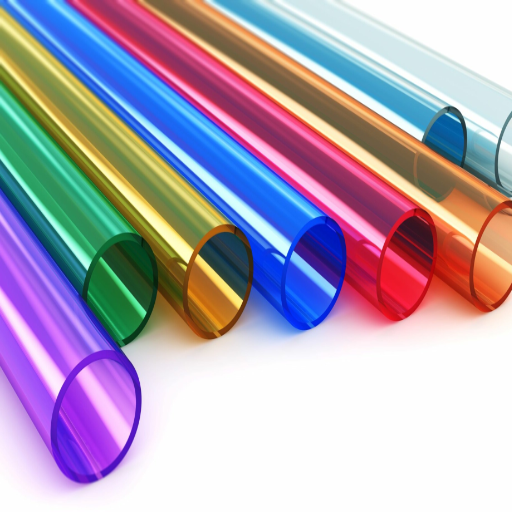
Recycling Acrylic Material
It has become increasingly imperative to recycle acrylic to reduce environmental impact and ensure sustainability. Acrylics are entirely recyclable, as legally defined by the name polymethyl methacrylate (PMMA), and with the advancement in recycling technology, there is a better scope for reuse. Typically, the acrylic used is broken down by depolymerization into monomer components for reprocessing into new sheets or products, with minimal loss of quality.
In recent times, innovations have successfully reduced energy consumption, making these processes economically sustainable on a large scale. Chemical recycling techniques, in particular, seem very promising in recovering high yields of PMMA while reducing waste and conserving resources. Moreover, mechanical recycling, which involves grinding the acrylic into small particles for further use in manufacturing, remains a viable alternative for many industries.
Statistics indicate a growing use of recycled acrylic. For instance, using recycled PMMA materials in production could reduce greenhouse gas emissions by up to 40% compared to creating new acrylic from raw materials. Recycled acrylic began to enter their supply chains for construction, automotive, and consumer goods, thereby strengthening circular economy principles.
To encourage recycling, companies are also initiating take-back programs, allowing end-users to return used acrylic items for proper processing. The operations demonstrate that sustainability needs to be considered in every phase of the acrylic lifecycle, responding to environmental considerations and consumer demand for environmentally friendly processes. By expanding such recycling operations, the acrylic industry can maintain a vital link in building a sustainable, environmentally conscious future.
Acrylic Alternatives That Are Environmentally Friendly
In the search for a greener alternative to acrylic, I tend to think of the materials that offer the same uses but are less harmful to the environment. An excellent choice is glass, which is durable, can be recycled infinitely, and is not toxic. Unlike acrylics, glass developmental processes and disposal are largely free from the environmental issues facing plastics today. Glass can thus be a sustainable alternative for displays, windows, or even decorative pieces if the intention is to impart clear, pleasing beauty.
Another viable and sustainable option I have been researching is bioplastics made from renewable resources, such as corn starch, algae, or sugarcane. They are designed to be eco-friendly in the sense that they are either naturally degradable or have a reduced carbon footprint during their manufacturing process compared to conventional plastics. In terms of strength and versatility, bioplastics are still in the process of development. However, many more are now being used in packaging or in lightweight paneling, which presents a promising avenue for phasing out acrylics.
In other words, bamboo or reclaimed wood serves as a natural, renewable option for some applications. For decorative or structural designs where value is placed on strength and the augmentation of natural elements, these alternatives work better. Each alternative weighs the pros and cons, but choosing to prioritize these environmentally friendly materials, as I see it, will ultimately go a long way in reducing our carbon footprint while fulfilling both functional and aesthetic demands.
Acrylic’s Future in Sustainable Practices
I see acrylic’s future in sustainable practices being inextricably linked to innovations in manufacturing processes and the introduction of different, greener materials. Using chemical engineering, methods can be developed that produce acrylic with lower carbon emissions or through renewable sources such as plant-based raw materials. Such alternative measures would reduce the environmental burden and also help create a better fit for acrylic within global sustainability objectives. Another pressing requirement is to drastically improve recycling technologies so that they facilitate the efficient scaling of acrylic recycling. A circular economy, where acrylic is reused and repurposed countless times without degrading the material’s quality, goes a long way in solving this issue.
Another critical consideration is creating acrylic applications with its end-of-life option in mind. This can be achieved through modular designs for acrylic products that are easy to disassemble and recycle. There needs to be more education on proper disposal and recycling methods to increase the amount of acrylic reclaimed, rather than it being sent to landfills or polluting ecosystems. This way, if institutions and companies accept this way of life, acrylic can surely remain a useful material without tainting sustainability efforts.
Although challenges still arise, I am hopeful about the potential for acrylic to exist in a more sustainable environment. The combination of research, innovation, mutual respect within corporations, and the acceptance of a greener way of life will determine the level of success acrylic is able to achieve in an environmentally conscious future. In collective efforts, steps can be taken, thereby charting a course where acrylic is not just one of the possibilities and functions but also sustainability.
Reference Sources
-
Sewport – What is Acrylic Fabric: Properties, How it’s Made and Where
Explains the composition of acrylic fiber, its production process, and applications. -
Wikipedia – Acrylic Fiber
Provides detailed information on the chemical structure and properties of acrylic fibers. -
Swavelle – What Is Acrylic Fabric?
Discusses the origins of acrylic fibers, derived from petroleum or coal-based chemicals. -
Monday Merch – Acrylic: Materials Explained
Covers the process, applications, and versatility of acrylic as a synthetic polymer. -
Reddit – What Exactly Is Acrylic and Is It Bad for Health?
Offers insights into the properties and common uses of acrylic in various industries. - View Plastic Pellets Manufacturers in China
Frequently Asked Questions (FAQs)
What is acrylic, and what is it made of?
Also known as polymethylmethacrylate or PMMA for short, acrylic is a transparent plastic manufactured through the polymerization of methyl methacrylate monomers, which develop into long polymer chains that form a transparent thermoplastic resin. Consumers often prefer Acrylic because it is lightweight and has excellent shatter-resistant properties compared to glass. Acrylics are typically extruded or cast into acrylic sheets, and the difference between these methods results in cast acrylic and extruded acrylic.
What are the characteristics of the acrylic material?
The various properties of acrylic render it a versatile material suited for multiple uses. It is optically clear, like glass, but with greater resistance to impact. Acrylic materials are sturdy and durable thermoplastics, which means they can resist change even when environmental conditions attempt to alter them. Since it is easy to mold acrylic plastic into any shape, it is very popular for making items such as signage, displays, and even apparel. Its lightweight design makes it ideal for use with a wide range of products.
What benefits does acrylic fabric offer?
In the textile industry, acrylic fabric offers several benefits. Considered warm like wool but lightweight, this fabric is one of those choices that could make a garment or piece of outdoor gear very comfortable. The acrylic fibers are mold-resistant and retain their color very well, allowing garments to maintain their appearance for a long time. These fabrics can also be combined with other fibers to optimize their working properties, i.e., durability or moisture-wicking. Given the benefits listed above, it would seem that acrylic fabric could be used for several applications, ranging from outdoor apparel to home textiles.
How is an acrylic sheet made?
Depending on whether the sheets are made by extrusion or casting, acrylic sheets are produced using one of these methods. In extrusion, the acrylic resin is heated and then forced through a mold to give sheets of various thicknesses. Consistent thicknesses are specified to enable mass production of them through the process. Cast acrylic sheets, however, are made by pouring acrylic resin into a mold that hardens. This typically results in higher optical clarity, making it suitable for applications that require better quality, such as display cases and lighting fixtures. The two processes contribute to their versatility and utility in various applications.
What is the difference between cast acrylic and extruded acrylic?
The manufacturing process is at the core of the differences in properties between cast and extruded acrylics. Liquid acrylic resin is poured into a mold and allowed to cure slowly. This produces a denser and clearer product. This particular form of acrylic is well-suited to offer excellent optical clarity and a smooth surface finish. The extruded acrylic, on the other hand, is created by heating and forcing acrylic through a die to produce continuous sheets, which are generally cheaper. However, they may lose slightly in clarity and durability. Regarding their applications, the two forms of acrylic are well-suited for each purpose: cast acrylic is used for high-end displays, and extruded acrylic is used mainly in sign applications.
Can acrylic be recycled and reused?
Yes, acrylic can be recycled and reused, although not always in the same way as traditional plastic recycling. Most of the recycling of acrylic involves crushing it into a fine, powder-like substance, commonly referred to as acrylic powder, which is then reprocessed into new products. In this way, acrylic stands as a much more environmentally friendly option, provided that it is managed correctly to avoid waste. On the other hand, some producers now offer biodegradable options to reduce environmental impact further. Although not accepted by all recycling centers, producers are working to increase the acceptance of acrylic and establish sustainable approaches within the industry.

